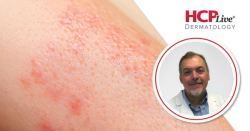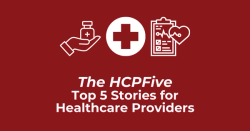
OR WAIT null SECS
VeNS Device Improves PTSD, Insomnia Symptoms in RCT, with Peter Colvonen, PhD
At SLEEP 2025, Colvonen discussed RCT findings that showed VeNS significantly improved PTSD and insomnia symptoms, offering a scalable solution for patients awaiting 1-on-1 care.
At SLEEP 2025, HCPLive spoke with Peter Colvonen, PhD, an associate clinical professor at the University of California, San Diego, about his late breaker on a randomized controlled trial that studied an electrical vestibular nerve stimulation (VeNS) for patients with both PTSD and insomnia.
About 90% of individuals with PTSD experience insomnia. However, PTSD treatments do not target insomnia, and 70% of patients report sleep issues after trauma-focused treatment. Colvonen and his colleagues sought to assess the impact of a non-invasive, electrical vestibular nerve stimulation treatment for PTSD on insomnia symptoms.
“One of the issues we are facing is the amount of training it takes for CBTI and for PTSD,” Colvonen said.
Even though many PTSD treatment options exist, such as prolonged exposure, EMDR, eye movement, reprocessing, desensitization, and cognitive processing therapy, patients with PTSD outnumber trained providers. Colvonen said that, at the VA hospital, a thousand individuals are waiting for 1 on 1 treatment.
“So, the question is: what can we do to, maybe not cure, maybe not fix it, but give them some stability with a remote ambulatory system?” Colvonen said. “The premise is, can we give them something that will help them in the meantime, until they can see that [provider] 1 on 1. The average time between when you get diagnosed with PTSD and when you see somebody is minimum 2 years… maybe you're on a wait list. Can we give them something to help sustain them in that time? And so, that's where this late-breaking abstract really comes in.”
The double-blind, randomized, sham-controlled trial, completed on December 2, 2024, evaluated the efficacy and safety of VeNS. The study included US adults aged 22 – 80 years (mean age, 43.1 years) with PTSD; 56% were female. PTSD was confirmed with the Clinician-Administered PTSD Scale for DSM-5.
Colvonen and colleagues randomized participants 1:1 to receive an active (n = 191) or sham (n = 192) device. Participants completed daily 30-minute stimulation sessions for 12 weeks.
The study showed that participants receiving VeNS had greater mean reductions in PCL-5 scores than participants receiving sham, demonstrated through intention-to-treat (-21.99 vs. -16.93, P = .024; and per protocol analyses (-24.62 vs. -17.31, P = .002). The active group also had a greater mean reduction in ISI scores in both the intention-to-treat (-7.30 vs. -4.76, P = .003) and per protocol (-7.98 vs. -3.27, P <0.001) analyses. Moreover, significantly more participants on VeNS achieved a 6-point reduction in ISI (intention-to-treat: 59% vs 44%; P = .007; per protocol: 61% vs 42%; P = .007).
“The sham device did work, but the active control was a much steeper, stronger slope than the sham device for the FDA trial,” Colvonen said. “So, it's not as good as, say, a 1-on-1 treatment, but the effect sizes are wonderful. I would absolutely start bringing this into the VA hospital where individuals are waiting, just give them something to help stabilize their sleep and PTSD while they're waiting…I'm really excited to bring it in for our waitlist while they're waiting for that gold standard 1-on-1.”
Colvonen has no relevant disclosures.
References
McKeown J, Colvonen P, Reel J, et al. Electrical Vestibular Nerve Stimulation for PTSD: Does It Improve Insomnia? Findings from a Randomized Controlled Trial. Late breaker was presented at SLEEP 2025, the 39th annual meeting of the Associated Professional Sleep Societies, from June 8 – 12, 2025, in Seattle.
Related Content:


